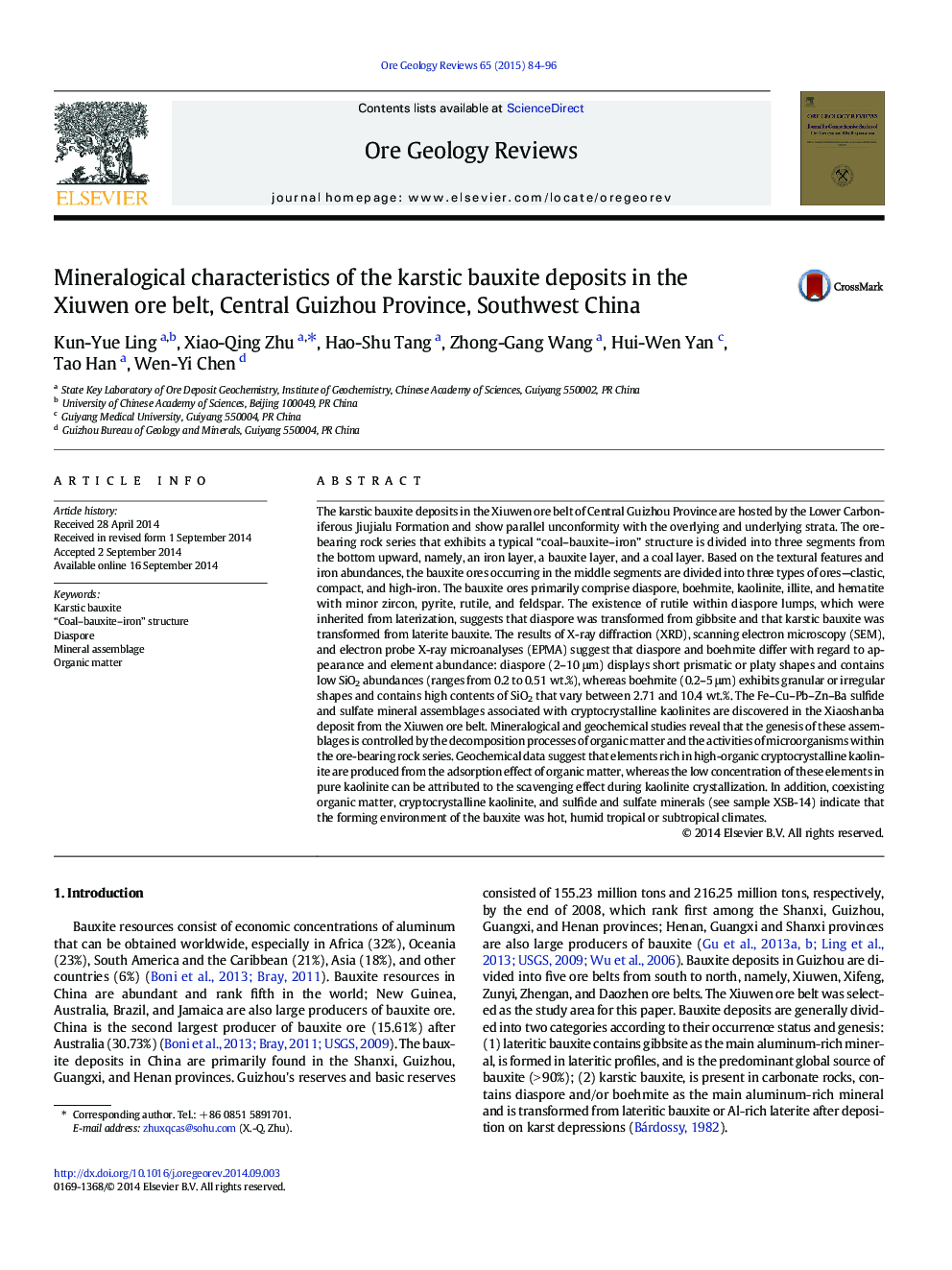| کد مقاله | کد نشریه | سال انتشار | مقاله انگلیسی | نسخه تمام متن |
|---|---|---|---|---|
| 4697250 | 1351868 | 2015 | 13 صفحه PDF | دانلود رایگان |

• Diaspore and boehmite have some differences in appearance and element abundance.
• The Fe–Cu–Pb–Zn–Ba sulfide mineral assemblages are related to organic matter.
• Enrichment of elements in black kaolinite was due to adsorption effect of organics.
• Scavenging effect of crystallization of pure kaolinite results in elements losses.
• The forming environment of bauxite was hot, humid tropical or subtropical climates.
The karstic bauxite deposits in the Xiuwen ore belt of Central Guizhou Province are hosted by the Lower Carboniferous Jiujialu Formation and show parallel unconformity with the overlying and underlying strata. The ore-bearing rock series that exhibits a typical “coal–bauxite–iron” structure is divided into three segments from the bottom upward, namely, an iron layer, a bauxite layer, and a coal layer. Based on the textural features and iron abundances, the bauxite ores occurring in the middle segments are divided into three types of ores—clastic, compact, and high-iron. The bauxite ores primarily comprise diaspore, boehmite, kaolinite, illite, and hematite with minor zircon, pyrite, rutile, and feldspar. The existence of rutile within diaspore lumps, which were inherited from laterization, suggests that diaspore was transformed from gibbsite and that karstic bauxite was transformed from laterite bauxite. The results of X-ray diffraction (XRD), scanning electron microscopy (SEM), and electron probe X-ray microanalyses (EPMA) suggest that diaspore and boehmite differ with regard to appearance and element abundance: diaspore (2–10 μm) displays short prismatic or platy shapes and contains low SiO2 abundances (ranges from 0.2 to 0.51 wt.%), whereas boehmite (0.2–5 μm) exhibits granular or irregular shapes and contains high contents of SiO2 that vary between 2.71 and 10.4 wt.%. The Fe–Cu–Pb–Zn–Ba sulfide and sulfate mineral assemblages associated with cryptocrystalline kaolinites are discovered in the Xiaoshanba deposit from the Xiuwen ore belt. Mineralogical and geochemical studies reveal that the genesis of these assemblages is controlled by the decomposition processes of organic matter and the activities of microorganisms within the ore-bearing rock series. Geochemical data suggest that elements rich in high-organic cryptocrystalline kaolinite are produced from the adsorption effect of organic matter, whereas the low concentration of these elements in pure kaolinite can be attributed to the scavenging effect during kaolinite crystallization. In addition, coexisting organic matter, cryptocrystalline kaolinite, and sulfide and sulfate minerals (see sample XSB-14) indicate that the forming environment of the bauxite was hot, humid tropical or subtropical climates.
Journal: Ore Geology Reviews - Volume 65, Part 1, March 2015, Pages 84–96